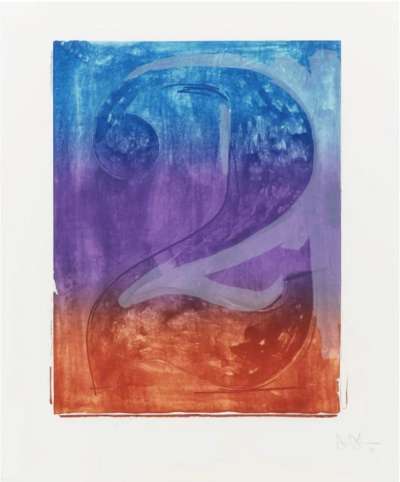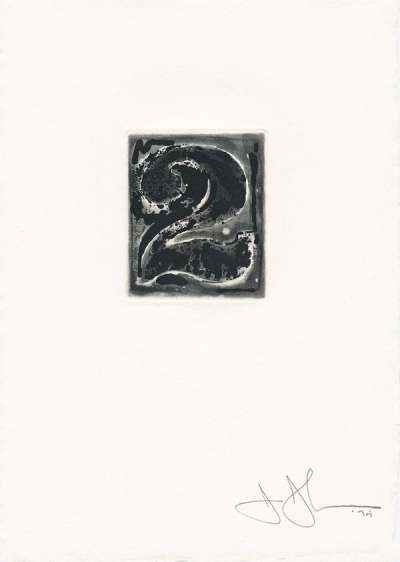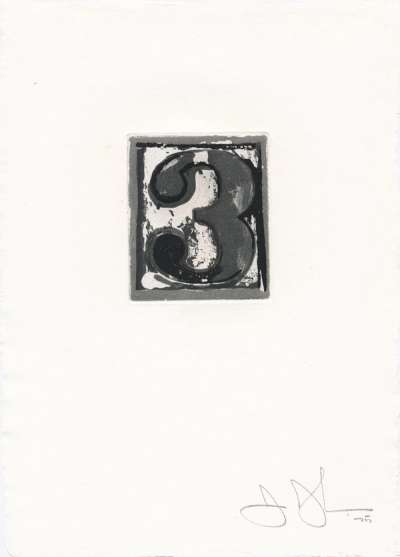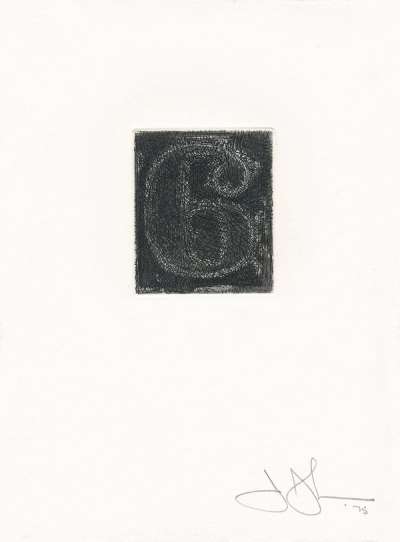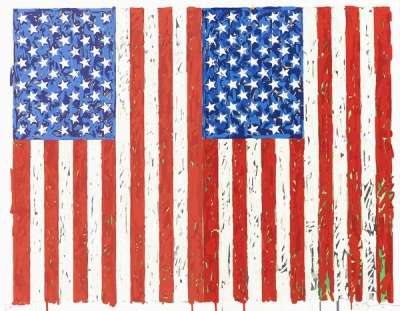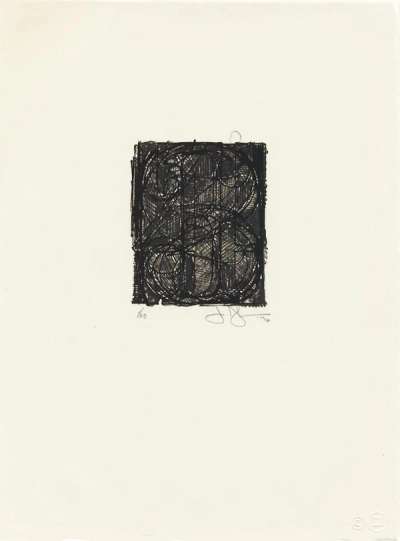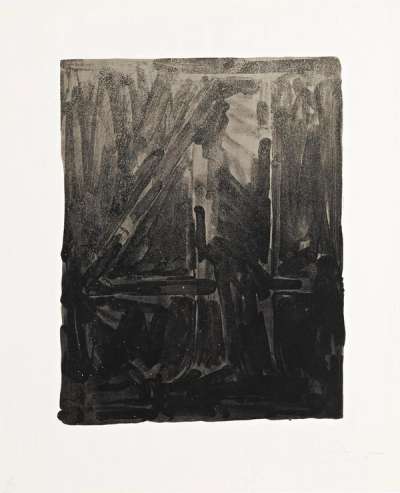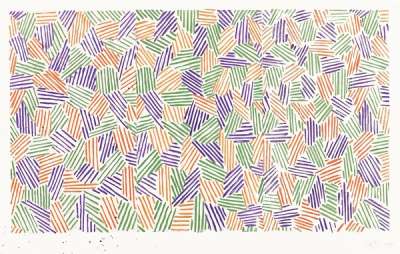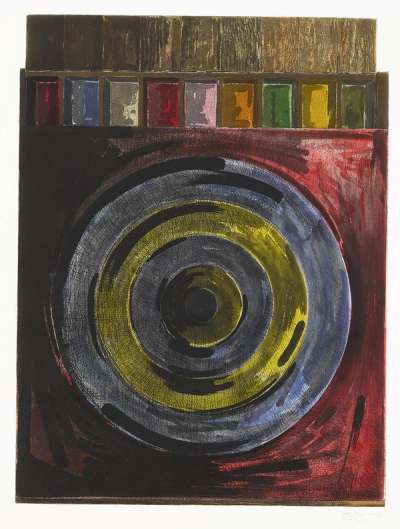The Significance of the Target Motif in Jasper Johns’ Art

 Target (ULAE 147) © Jasper Johns 1974
Target (ULAE 147) © Jasper Johns 1974Jasper Johns
139 works
Key Takeaways
Jasper Johns' use of the target motif stands as a central element in his revolutionary approach to 20th century American art. Emerging in the mid-1950s, the target became a recurring symbol in his work, bridging the gap between the abstract and the representational. Johns transformed the familiar image of a target into a complex exploration of perception, ambiguity, and symbolism, leaving a lasting influence on movements like Pop Art and Minimalism.
Jasper Johns is widely recognised as one of the most influential figures in 20th-century American art. Known for his innovative use of everyday symbols, Johns revolutionised the art world by incorporating recognisable imagery, such as flags, numbers, and the alphabet, into his work. Among these recurring motifs, the target stands out as one of the most significant elements in his body of work. A simple yet profound image, the target embodied Johns’ fascination with perception, ambiguity, and the intersection of the representational and the abstract.
The Origin of the Target Motif
Inspiration and Early Works
In the mid-1950s, Johns was searching for a new artistic direction, eager to break away from the dominant Abstract Expressionism of the time. He famously destroyed much of his earlier work and began painting a set of motifs that included Numbers, Flags, and the Alphabet. This shift allowed him to reintroduce recognisable subject matter into his art, liberating him to explore other formal and material concerns. Among these found images, the target emerged as a central motif from 1955 to 1961, during which Johns created several paintings and drawings featuring the target.
Target with Four Faces (1955)
One of Johns’ earliest and most notable target works is Target with Four Faces (1955). This piece marks a significant moment in his career, establishing the target as a recurring element in his oeuvre. The artwork features a painted target in primary colours, topped with four plaster faces obscured by a hinged wooden cover. This early use of the target not only highlights Johns’ fascination with everyday symbols, but also sets the stage for his ongoing exploration of ambiguity and perception.
 Image © Steven Zucker via flickr / Target With Four Faces © Jasper Johns 1955
Image © Steven Zucker via flickr / Target With Four Faces © Jasper Johns 1955Symbolism and Interpretation of the Target
The Target as an Object
The target in Johns’ work is both a literal object and a symbol. As a visual motif, it represents an aim, a point of focus, and an image of precision. Yet, its simplicity and universal recognition also render it strangely depersonalised, inviting viewers to see it as both a familiar and an overlooked object. By choosing the target, Johns juxtaposed the recognisable with the abstract. Beyond the material surface of the work, the target becomes more than just a painting; it is a target in itself. When one places a target’s concentric circles on anything, that thing is transformed into a target, implicating acts of seeing and taking aim. This act of transformation extends to the anonymous plaster faces above the target, which are stripped of their eyes, blocking any reciprocal gaze between the viewer and the faces. This exclusion forces the viewer to engage with the unsettling interplay between the painted target and the faceless casts, highlighting the detachment and objectification inherent in the imagery.
Exploring Ambiguity
Johns’ targets challenge viewers’ perceptions by creating ambiguity. While the target is an instantly recognisable symbol of focus and precision, Johns transforms it into something far more complex and enigmatic. By employing a combination of bold primary colours, textured encaustic techniques, and varied scales, Johns distorts the straightforwardness of the target, challenging viewers to look beyond its surface. The target’s repetitive, concentric circles evoke both a sense of order and a hypnotic pull, leading the audience to question not just what they are seeing but how they are seeing it.
The absence of the eyes in the plaster casts disrupts any chance of exchange between the viewer and the depicted faces, emphasising the disconnect between perception and reality. Viewed through the lens of the Cold War era, the work suggests the broader implications of targeting; the anonymous faces can be seen as stand-ins for the masses targeted by political powers, corporate advertising, or mass media. Alternatively, the piece might evoke the violent undertones of a shooting range, where the facelessness of the masses signifies a loss of sight, and thereby morality, in the face of impersonal forces. The result is a visual paradox where the target is both a concrete object and an abstract idea, prompting viewers to confront their own perceptions and the elusive nature of meaning in art.
Aesthetic and Technical Aspects of Johns’ Target Works
Materials and Techniques
Johns’ innovative use of materials plays a crucial role in his target works. He often employed encaustic, a medium that mixes pigment with hot wax, creating a quick-drying surface that captures the tactile quality of each brushstroke. This method allowed Johns to explore the subtleties of texture, form, and colour, imbuing his targets with a sculptural depth that emphasises their physicality. His gestural nods to Abstract Expressionism highlight the tension between the representational nature of the target and the abstract qualities of his execution.
Repetition and Variation
Throughout his career, Johns repeatedly explored the target motif in various forms, experimenting with scale, colour, and texture. This repetition served to both familiarise and alienate viewers, forcing them to constantly re-evaluate their relationship with the image. By varying the target motif across different works, Johns investigated themes of consistency and change, questioning the stability of meaning in visual symbols.
The Target Motif in the Context of Johns’ Broader Work
Connection to Other Symbols
The target is part of a broader lexicon of symbols in Johns’ work, often appearing alongside other familiar images such as flags, numbers, and maps. By incorporating these everyday symbols, Johns blurred the line between the mundane and the profound, challenging the traditional boundaries of high art. The target’s simplicity and universality make it a powerful counterpart to his other motifs, reinforcing his exploration of perception and meaning.
Impact on Contemporary Art
Johns’ use of the target had a significant impact on subsequent art movements, particularly Pop Art and Minimalism. His ability to elevate common symbols into high art opened new possibilities for artists to engage with everyday imagery. The target, in particular, has been referenced and reinterpreted by numerous artists, highlighting its enduring resonance as a symbol and artistic device.
Critical Reception and Legacy
Early Reception of the Target Works
When Johns first introduced the target motif, the art world was initially divided. Critics in the 1950s and 1960s often struggled to categorise his work, which defied easy interpretation. Over time, however, Johns’ targets have become central to discussions of his oeuvre, celebrated for their depth and complexity. The target motif has since been recognised as a pivotal element in Johns’ art, emblematic of his challenge to conventional modes of seeing.
Enduring Legacy
The target remains a powerful symbol in contemporary art, both within Johns’ work and beyond. Its lasting impact lies in its ability to provoke thought and reframe familiar imagery, encouraging viewers to consider the meaning of symbols in art and life. Johns’ targets continue to challenge audiences, prompting them to rethink their perceptions and engage with art in a more profound way.
The Significance of the Target Motif in Jasper Johns’ Art
Johns’ target motif encapsulates his ability to transform the ordinary into the extraordinary, inviting viewers to question the nature of perception, symbolism, and meaning. Through his innovative use of materials, ambiguous imagery, and strategic incorporation of recognisable yet depersonalised symbols, Johns elevated the target beyond its literal function. His work challenges traditional distinctions between the familiar and the abstract, the personal and the impersonal, prompting deeper reflections on how we engage with visual culture. As a recurring theme in his oeuvre, the target stands as a testament to Johns’ profound impact on contemporary art, influencing generations of artists who continue to explore the boundaries of representation and reality.












